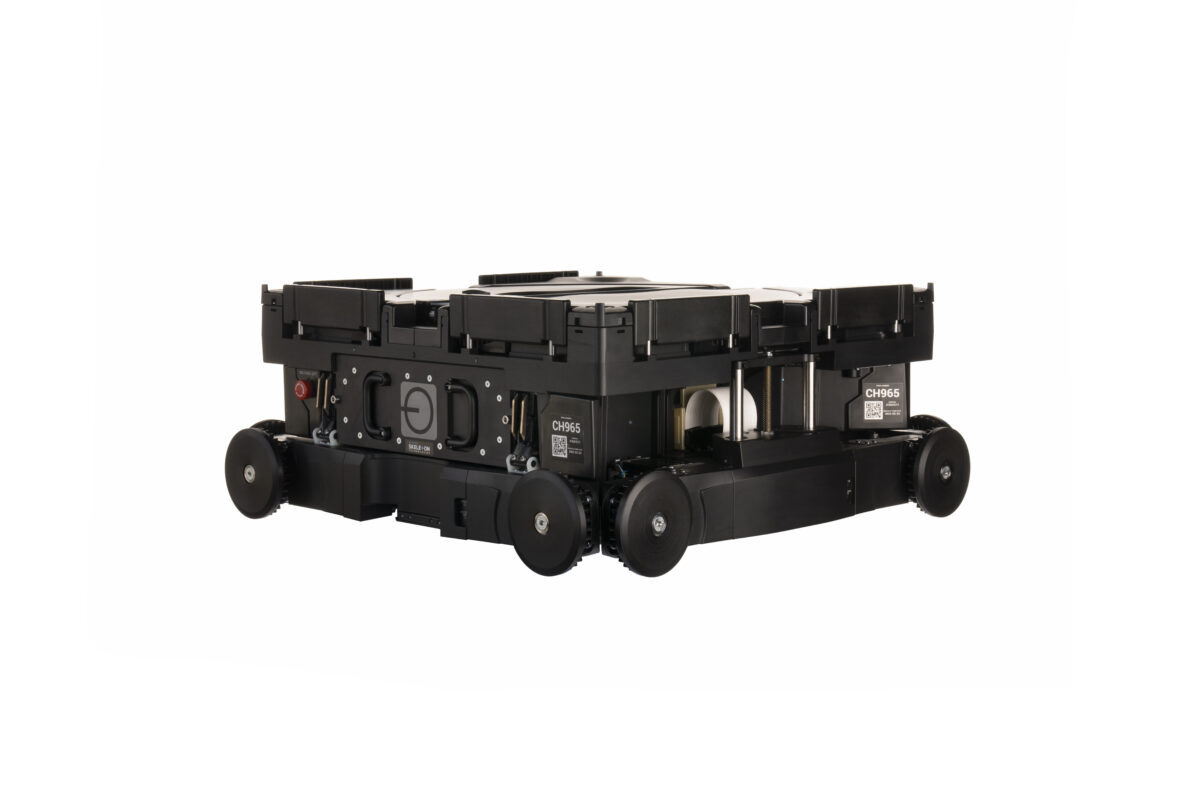Attabotics on Monday revealed its first commercialized robot, Attabot 2022, as part of the world’s first 3D robotics supply chain system.
The Alberta, Canada-based company seeks to revolutionize the supply chain industry through the use of vertical storage structures, populated by highly efficient 3D robotics. The Attabot 2022 is the company’s first commercialized proprietary robot.
“Now we actually have not an expression of an idea, but it’s now the product we were always building towards,” Attabotics CEO Scott Gravelle told FreightWaves. “It’s 60% fewer parts than the old robot and looks way more badass.”

The Attabot is designed to travel in three dimensions within its vertical storage structure, where it can transport a wide range of payloads. According to Gravelle, the Attabotics ecosystem is capable of an unlimited number of robot, structure and workstation configurations.
Attabotics completed thousands of hours of testing of its previous Attabot iterations, but the Attabot 2022 is the company’s first commercialized product.
“Despite supply chain constraints and chip shortages, we’ve been agile in ensuring all components are accounted for while transitioning our customers from robot prototypes to the new commercialized Attabot 2022 technology,” said Scott Gravelle, CEO and founder of Attabotics. “The ability to commercialize technology — to move a product from concept to market efficiently — is crucial in light of today’s high-demand e-commerce landscape. It’s been a long journey to develop commercial hardware, but I’m proud of the Attabotics team.”
READ MORE: How leafcutter ants inspired supply chain innovation
The new Attabot is capable of carrying bins up to 16 inches tall at 100 pounds — 25% more than the robot’s previous iterations.
When asked about the largest hurdles during the development process, Gravelle readily offered an answer.
“Warehouses are dirtier than you think they are,” he said. “As soon as you start adding contamination into some of this, it created an unreliable platform that required a great deal of preventative maintenance to keep the systems stable.”

Attabotics accounted for this issue, designing the new Attabot with an IP63 rating with enclosed mechatronics — which means less visits from maintenance technicians.
According to Attabotics, its system can reduce a company’s needed warehouse space by up to 85%. The efficient use of easily accessible vertical space by the individual Attabots is designed to maximize the speed of warehouse fulfillment and support growth without the need for physical expansion.
While the increased use of robotics may scare some, Gravelle asserts that Attabotics will allow for job growth by bringing warehouse jobs back to urban areas.
“Our technology allows us to consolidate the space needed to do this work,” Gravelle said. “So, now we can move warehouses and fulfillment centers into the community, which means now we’re opening up a labor market for people that might not have had a car that would drive an hour and a half out of town to go work in some million-square-foot facility.”
According to Gravelle, Attobotics’ effect on businesses is overwhelmingly positive.
“In every install we’ve ever had so far to date, without exception, is that we have created more jobs by allowing our customer’s real estate asset to be able to do more,” Gravelle said.










